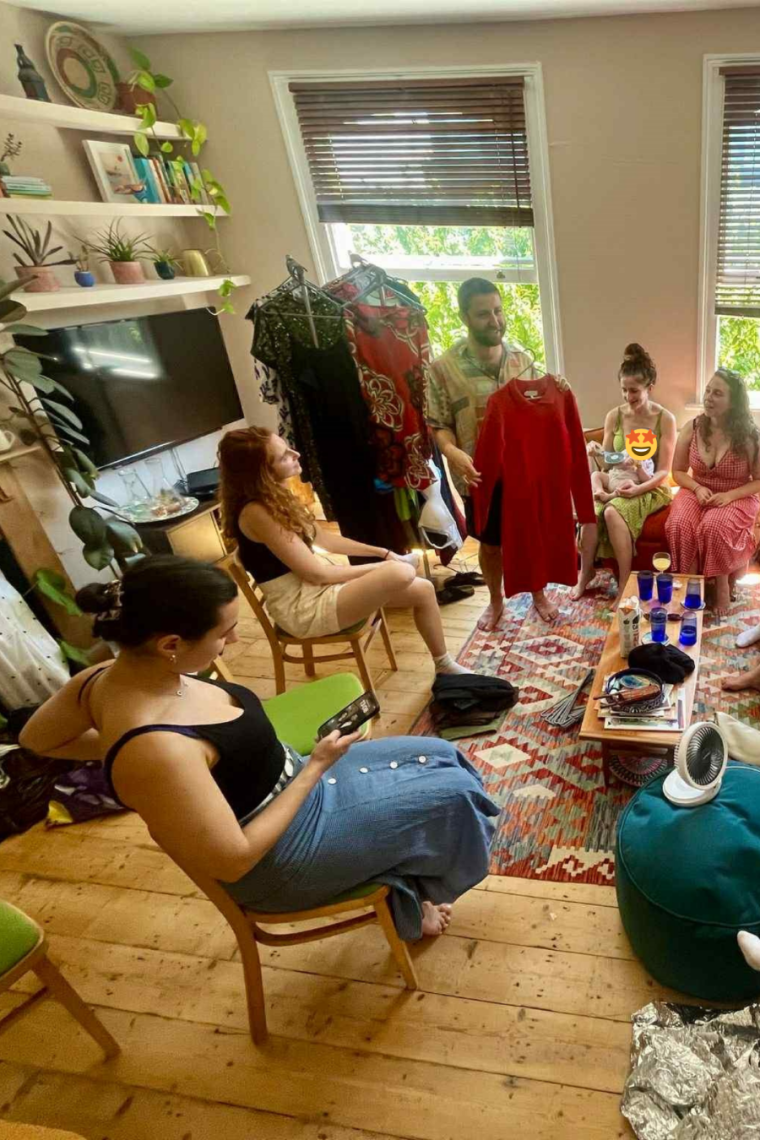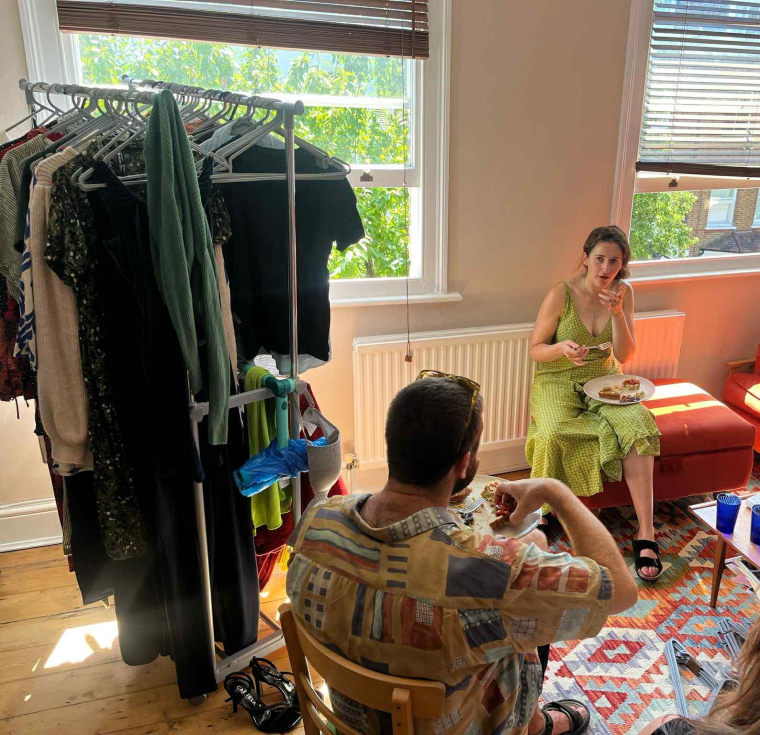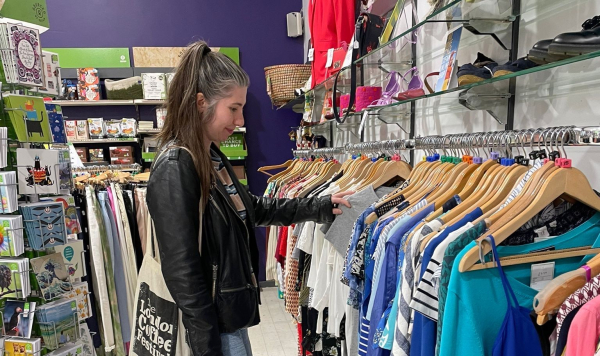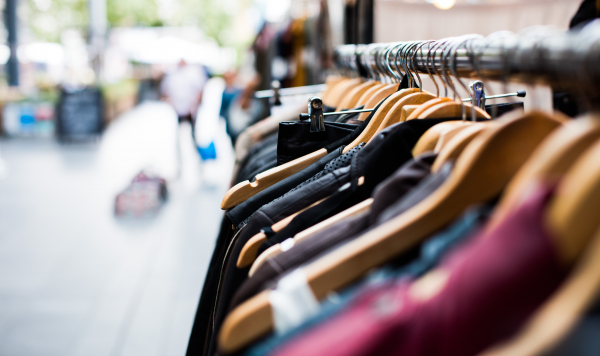
NLWA colleague Sophia recently organised a clothes swap with a group of friends, to refresh their wardrobes without getting pulled into unnecessary consumerism and buying new things. It was a way to ensure their unwanted clothes actually got reused instead of being left unsold at a charity shop or as an online listing.
“My friends and I were recently discussing how we all had quite a few unloved items kicking about in our wardrobes that we wanted to clear out in the most sustainable way possible. We often share clothes or end up giving each other items that no longer fit or we’ve grown bored of. So we came to the conclusion that a clothes swap would be a great way to address these issues, not break the bank and do the right thing for the planet.
“As I work in waste and recycling, some friends asked me for suggestions on how to part with clothes they no longer use enough, mentioning they often feel attached to them and find it hard to decide which items to give away. So I put together these top five tips:
- Put the clothes you're not sure about in a bag and pop them in your cupboard or under your bed. Give it a time frame - 12 months tends to be good as it factors in the seasons - if you haven't thought about them or worn them in that time, it's time for them to go!
- Work out if the item goes with at least five items in your wardrobe. If it doesn't, cull! Similarly try to only buy clothes that pair well with at least five items you already own.
- Give the hanger trick a go - once you've worn an item, put it back in the cupboard with the hanger flipped the other way. That way you can easily see what you're wearing regularly and what you're not and either start wearing neglected items or donate them to the swap.
- Make a clothing memory box e.g. for old school hoodies, gig merchandise or any sentimental piece. Put it under your bed or in storage. Eventually your relationship to these things might change and you can reduce them, but at least you can access the nostalgia whenever you like.
- Set up a longer term plan - over time try to get rid of three tops that you think are just OK and replace with one good quality top which you really love.
“For the clothes swap, all you need is somewhere indoors where you can lay out the clothes (or the park works if the weather is good), donated clothes and people to attend. My friend Yas offered her living room. We all brought our clothes along and a few hangers – Yas cleverly repurposed some brooms and a clothes drying rack for extra hanging space.
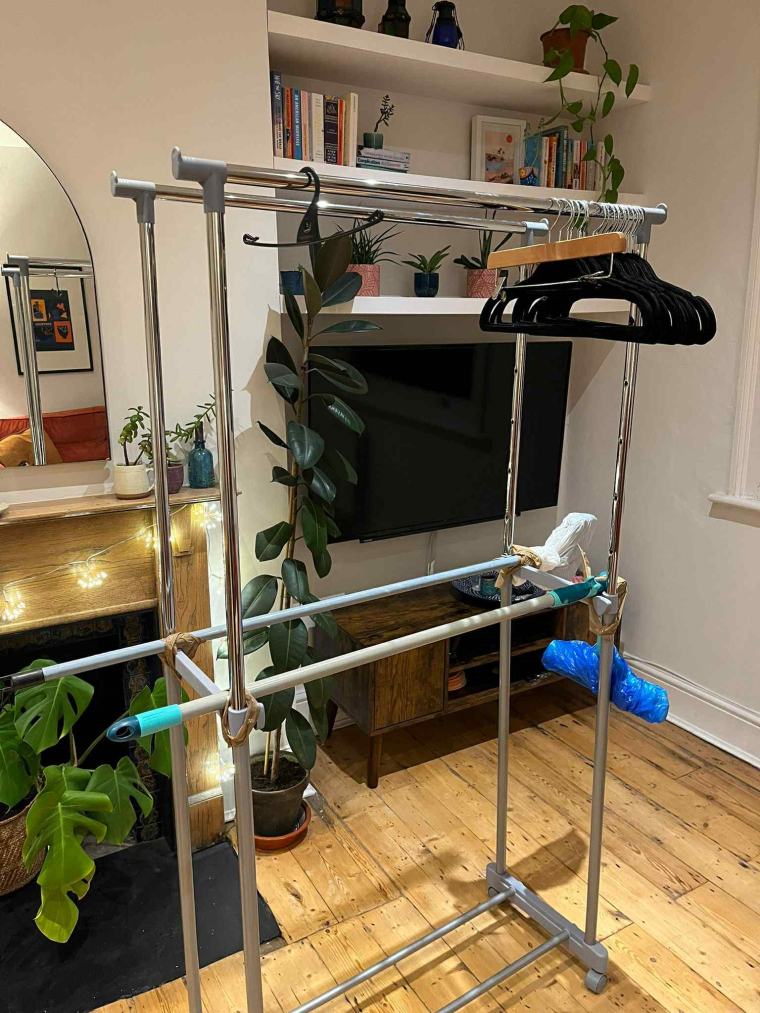
“We laid out jumpers, skirts and shorts on a table and hung dresses, trousers and tops. Then we started browsing the goods and if we found something we were specifically looking for or that caught our eye, we would lay claim to it (often in true Brit-style politely checking first if anyone else wanted it!).
“I donated 12 items to the clothes swap and picked up about 6 new things. So for me that was a win as my aim was to have less clutter at home but also to zhuzh up my wardrobe and not be tempted to buy new, or worse still, be subjected to the hungry claws of fast fashion.
“If you want to run your own clothes swap my top piece of advice is to feel it out among friends about 2-3 months in advance. Once people seem keen on the concept, do a poll to lock the date in. That way you’re giving people time to clear out their wardrobes and realise how much they don’t wear. I’d aim to do one twice a year as this allows you to have a focus on summery clothes in one sitting and clothes for the cold weather in the other.
“If you decide to organise a clothing swap, make a day of it! Bring snacks and get the kettle on. Yas made some brunch and delicious cakes at ours which put everyone in a good mood. It’s a productive way to catch up with friends. And best of all you’re choosing the environmentally friendly path, valuing the planet and its resources.”
